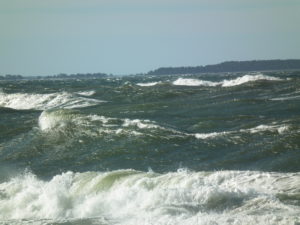Learning how to fish in water
Learning how to fish in water takes a lot of desire, patience, and skill, of course, there are fishing charters that take the pain out of learning by trial and error.
If you are new to the sport of fishing, you need to know some of the basic rules of fishing. Like other forms of hunting, fishing involves both your environment and those around you. Be respectful of both. You can responsibly enjoy this treasured pastime in several ways.

Learning how to fish in water by tradition and customs
Fishing is an ancient practice. It dates back nearly 10,000 years. A number of various techniques and traditions have been used during fishing’s progression. Modern technological developments have changed the way people fish, but many of the same rules, regulations, and social norms involving fishing remain.
Always practice good stewardship of our waterways when you are fishing. Remember that these waterways were around thousands of years before you and will remain long after we are gone. You can make a conscious decision to leave the areas in which people fish in better condition than when you found it. Take care of our lakes, rivers, and other waterways so that others will enjoy these areas for years to come. Practicing certain behaviors will ensure that you are taking good care of the places where people fish.
Never litter when you are fishing. Always bring a trash bag or other receptacle to use for the collection of your trash. You can easily deposit it in a nearby trash receptacle. Dump your refuse in properly assigned dumping stations instead of tossing it in the water. You do not need to spend much time figuring out the many ways in which this hurts the environment.
As you fish, always use the correct type of bait and fishing gear. Certain areas allow for certain bait and gear. You will also encounter limits on the number, size, and kind of fish that you can keep. Become familiar with what these limits are and pay attention to them. Do not wait until you are at your fishing spot to search for what is allowed and what is not. Check with your destination before you head out on your fishing trip to see what the local regulations allow. If you plan on using a boat while fishing, research to see what kinds of watercraft are allowed where you are going to fish.
Every fishing location is different, so pay special attention to local procedures and cautions. This also applies when you decide to clean your boat after you leave the water. You do not want to spread non-native species to another body of water.
Finally, never fish where it is not permitted. There is always a reason why it is illegal. Some reasons include the protection of certain wildlife, the proper care of vegetation, and the safety of you and others who want to fish.
You should also follow a number of cautionary behaviors to ensure your safety. As with all forms of hunting, safety is first. If you will be using a boat while you fish, always wear your life jacket. Make sure that your passengers wear their life jackets, as well.
Be very careful when baiting and removing hooks. Make sure that you never fish on unauthorized waterways. Follow the posted speed limits and wake warnings that accompany the use of a boat. Bring with you all relevant safety items, such as water, flashlights, maps, and a cell phone.
Fishing continues to be a favorite pastime. 2001 saw nearly 16% of the U.S. population over the age of 16 spend 16 days fishing. You enjoy the sport of fishing, so follow the rules that allow for the continuation of fishing. Be responsible and courteous to others and your environment. Take time to discover how you can be both a better and safer angler.
Thank you for visiting http://nordiccuisine.fi/ and reading this Information on Learning how to fish in water article post. I hope this was helpful and useful to you. Please do share this website link with your friends. If you would like to read articles on the Healthy Eye Vision visit http://healthyeyes.eu/
